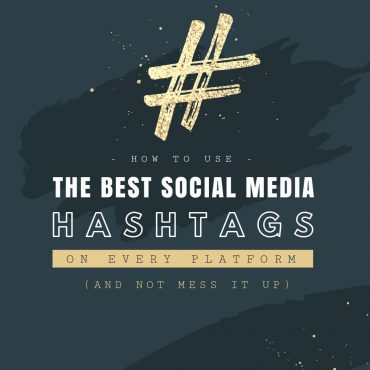If you run a small business, then chances are you are looking for ways to attract more business. Sure, running small business places huge demands on your time and brand strategies can seem unimportant when there are other pressing issues.
But don’t dismiss brand building just yet. It can pay regular dividends.
Consider these statistics:
- 74% of online consumers expect a brand’s Web content to be personalized to their interests.
- 92% of consumers trust brand advocates
- 45% of a brand’s image can be attributed to what it says and how it says it
- 75% of consumers cite brand awareness as a major influencer in making their buying decision.
So why is it that few small businesses invest in building their brands?
According to Philip Kotler –
The art of marketing is the art of brand building. If you are not a brand, you are a commodity. Then price is everything, and the low-cost producer is the only winner.
You don’t have to hire an expensive designer or brand strategist. It does mean that you will need to go beyond creating a logo and picking a color pallet.
Here are 11 powerful big brand strategies for small business growth that you can apply.
1.Establish a position
Lorna Jane, an active wear manufacturer for women, launched in 1989. At the time, no concept store focused on active wear alone. The founder Jane Clarkson, however, had been testing her active wear designs. Over time she realized that there was a growing interest in the products and that there appeared to be space for a retail category around active wear.
To attract and engage customers Lorna Jane uses social media. The brand engages with their customers and shares information with them that is helpful and relevant. The popularity of their posts is an indicator that they are viewed as more than an active wear brand and more as active wear advocates.
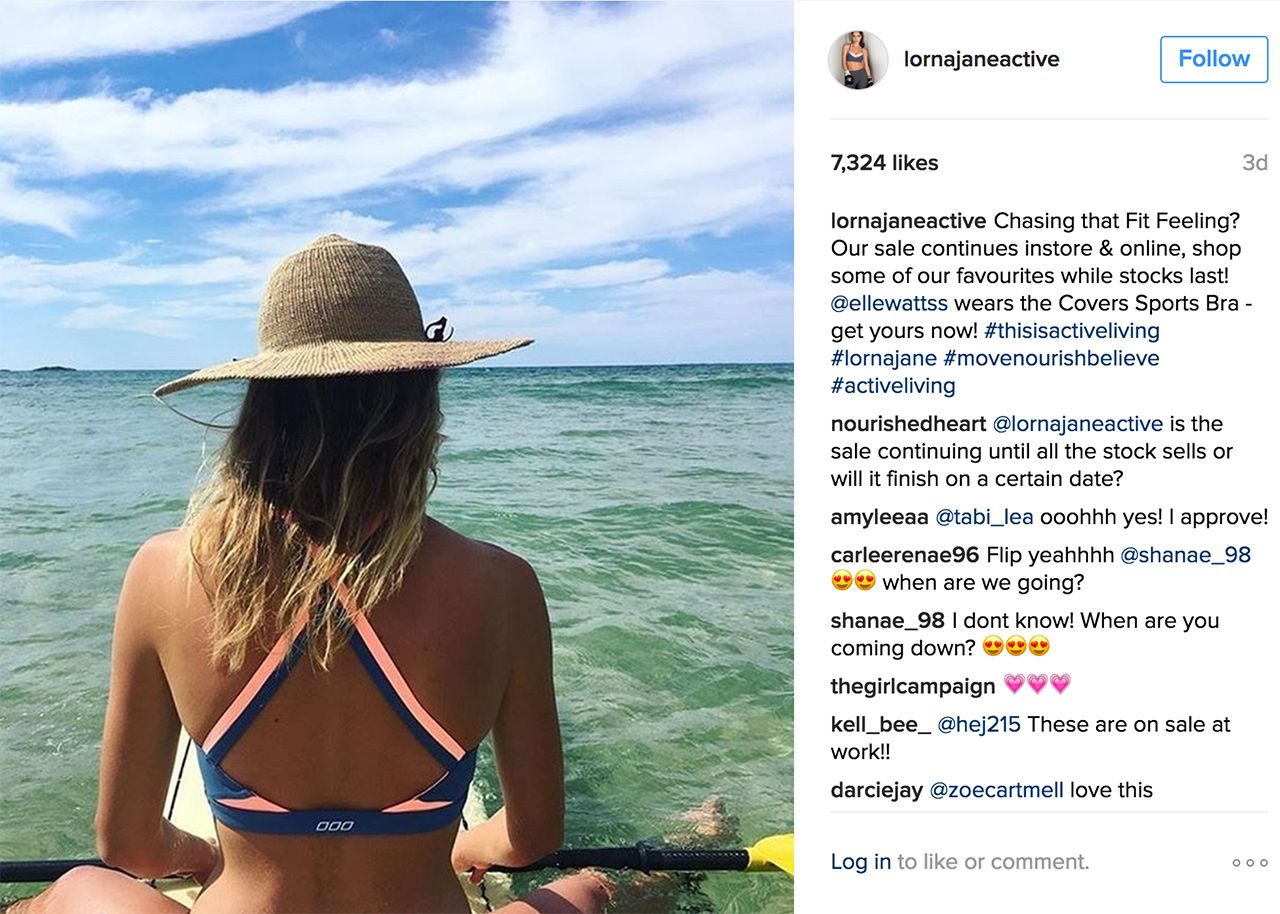
On the company’s, Move Nourish Believe blog they share everything from healthy recipes, beauty tips and exercise advice to help their audience get the most out of their active lives.
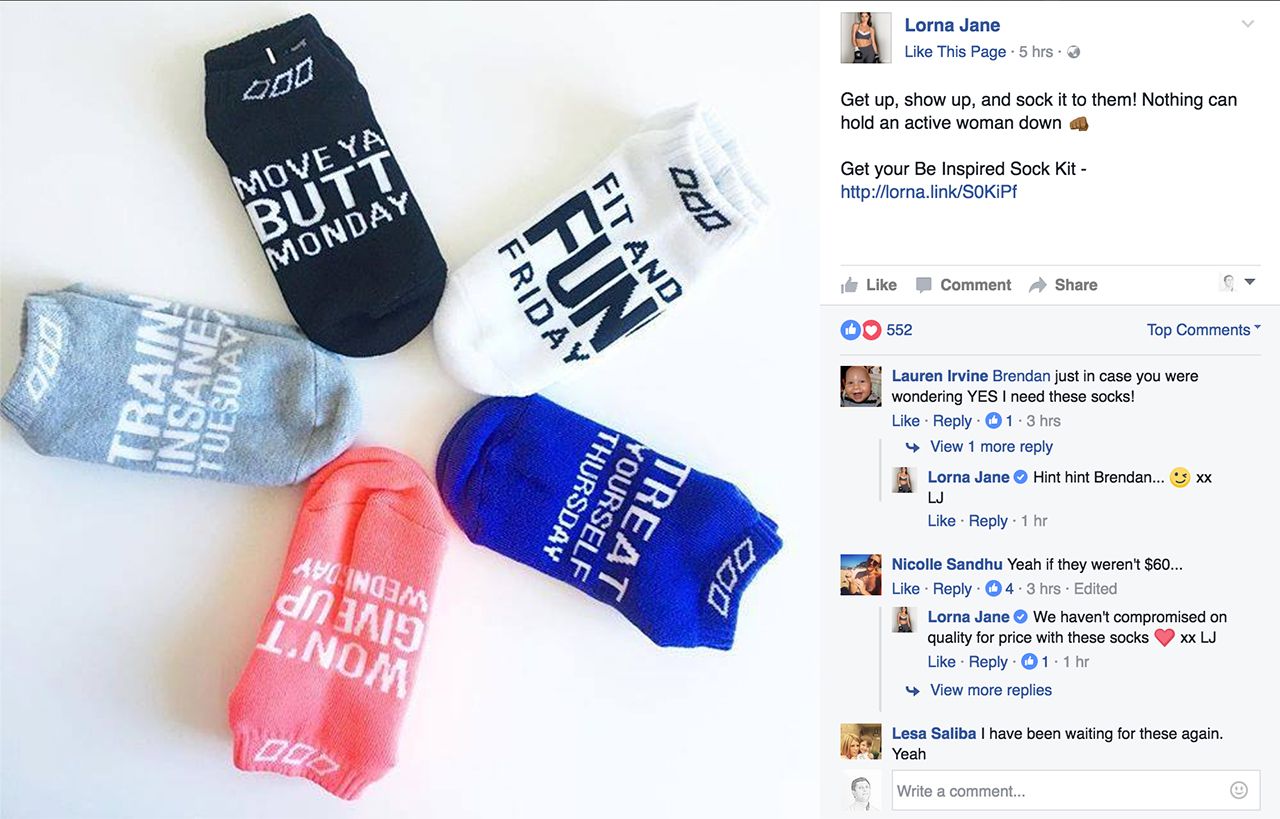
How to apply this strategy:
- List your competitors and all that they do well and no so well
- List how you could differentiate your brand
- List what you do well from your customer’s perspective. For example, are you better, cheaper, faster, provide more value, etc.
- Use a few words to describe your brand positioning or competitive advantage. For example consider how Target, Kmart, Nordstrom and Walmart position themselves.
2. Develop your brand standards
Think about Coca-Cola for a second. Now picture this – the company releases a bright orange can with the words Coca-Cola in a bold comic font.
Having difficulty picturing it in the stores?
That’s because the company has all-encompassing brand standards. Whether it’s packing, social media or TV commercials, it draws on the same fonts, colors, and experiences.
Their brand standards help them evoke the feelings and expectations that people associate with the brand.
How do you apply this brand strategy to your business?
Create a set of design rules that encompass the look and feel of your marketing collateral. Your brand standards are best developed by focusing on the strategy and consistency in these 5 key areas:
Logo – The consistent use of your logo is the most important aspect of your brand standards. It’s placement and sizing needs to remain consistent on all your marketing material
Graphics – Consistently using the same graphic elements will help your customers remember your brand easily. For example, you could use different themed borders for images on New years day and St Patrick’s day, but the border size and weight should be consistent along with any other images you produce.
Colors – Colors invariably create an immediate impression on your audience and play a role in remembering your brand. So, choose colors that create the emotions you want to evoke in people. How?
Survey them.
Fonts – Use a handful of fonts consistently on all your material including one serif font and one san-serif font. As a rule, do not use more than three fonts in a document.
Illustrative or Photographic style – Will your visuals consist of illustrations or photos. Aim for consistency again both in style and color use.
3. Maintain an authentic voice
Purina while a big company could easily default to corporate speak. Instead, they use social media to highlight fans, employees, and events that their animal-loving nature. In other words, in sharing real-time personalized content, they are growing connections with pet lovers everywhere. They are also positioning themselves as an authority in the space while sharing their passion and expertise.
Their “always on” campaign which spearheaded this movement resulted in:
- 100x lift in @Purina mentions on Twitter
- A response rate of 86%
- 6.5 million personalized quality impressions
This tweet from a fan is an example.
The @purina team are all pet owners & lovers just like U. They understand quality & safety of pet food is very important. #letslivebig #ad pic.twitter.com/jiSyfR4rZi
— TINKERBELLE the Dog (@TINKERBELLEadog) October 18, 2016
How do you apply this strategy to your business?
Offer insights into the way you work like Zappos do
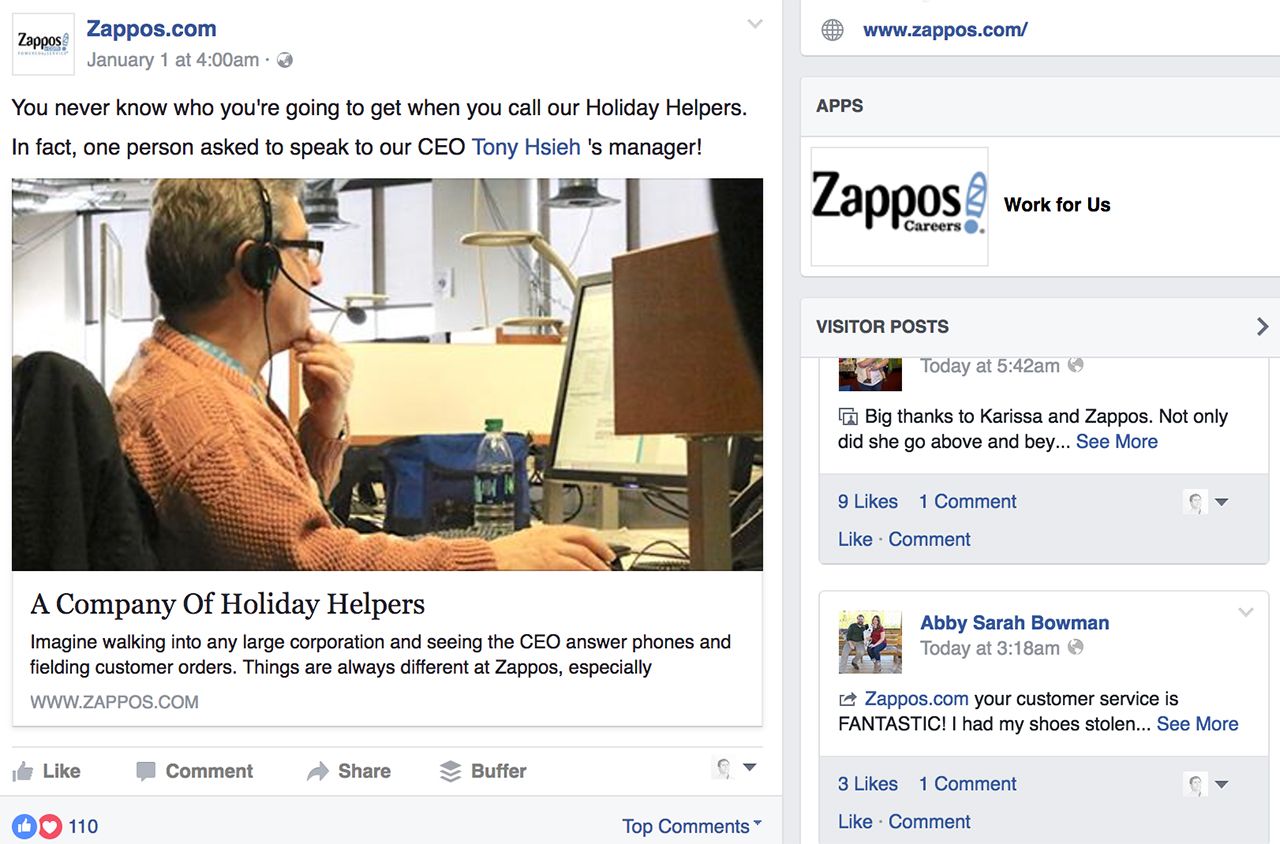
Humanize your brand by being vulnerable and having a laugh at your expense like Marie Forleo in this post.
Share content that fits in with your brand identity. For example, if sharing animated GIF’s doesn’t align with your brand strategy then don’t do it.
4. Reward customer loyalty
Research from the Harvard Business School indicates that increasing customer retention by 5% increases profits by 25% to 95%. Customer retention isn’t just about meeting customer expectations but rather exceeding their expectations so that they become loyal advocates of your brand.
Dell, for example, calls after 2-3 weeks of delivery of their product to ensure that the product arrived and that the customer is happy with it. Why do this?
- To reduce customer concerns before it becomes a problem
- Provide a human touch and build relationships especially as the order was likely to have been made online
- To provide a contact number by which they can reach a representative should they run into problems in the future
How do you apply this strategy to your business?
- Use customer loyalty programs. Starbucks use their mobile loyalty apps to achieve their dominant position in the coffee shop market.
- Use customer satisfaction surveys
- Send helpful emails or special promotion email campaigns like Expedia

- Answer questions on social media
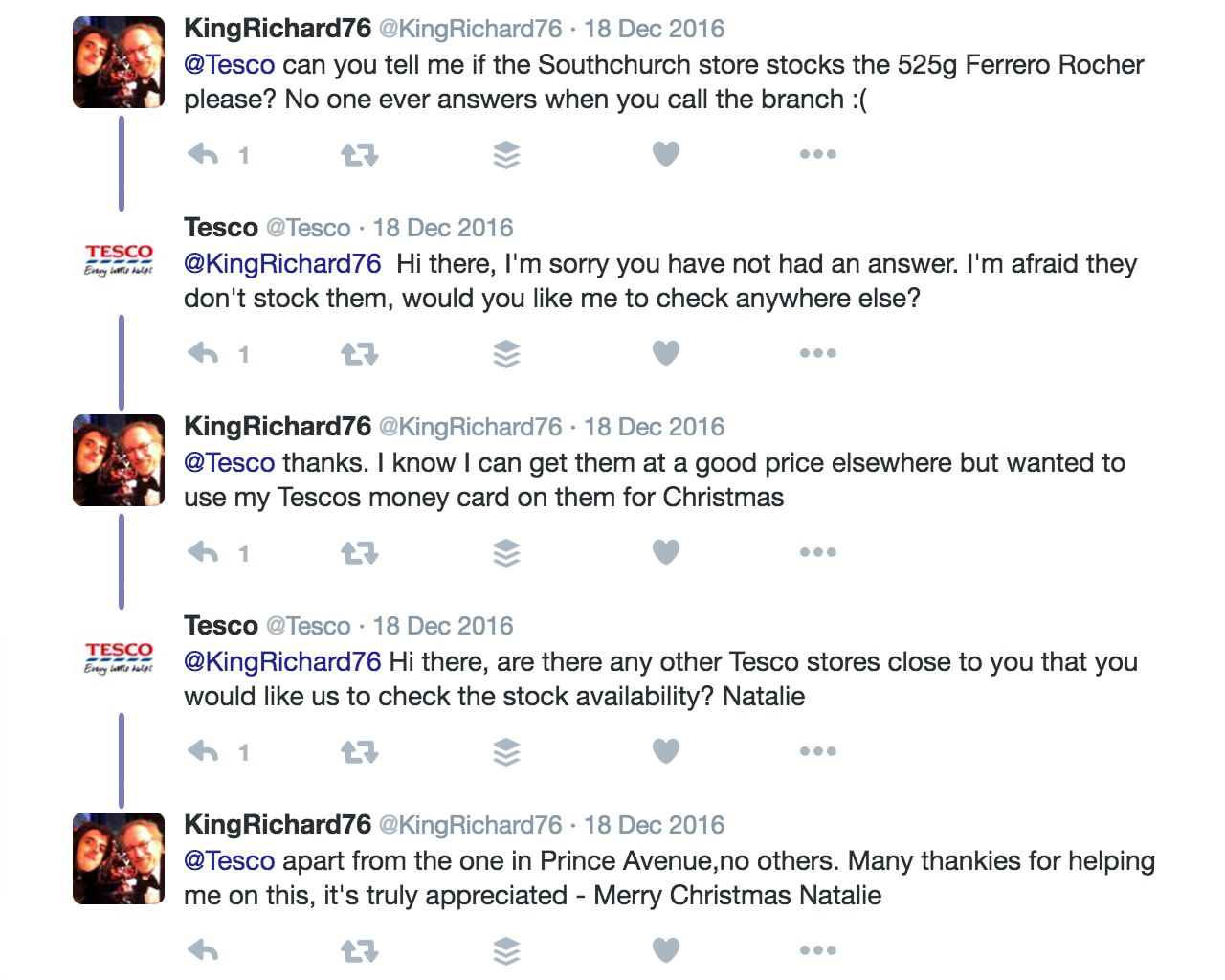
- Create content to educate consumers like HelpScout
- Ask for reviews to gain feedback
- Use video to increase customer engagement and interaction – For example, Jon Lee Dumas uses Snapchat stories to create conversation around relevant topics.
- Create a loyalty program with cool perks – Kuru a footwear store have a loyalty program that offers ways to gain points by sharing or reviewing your purchases.
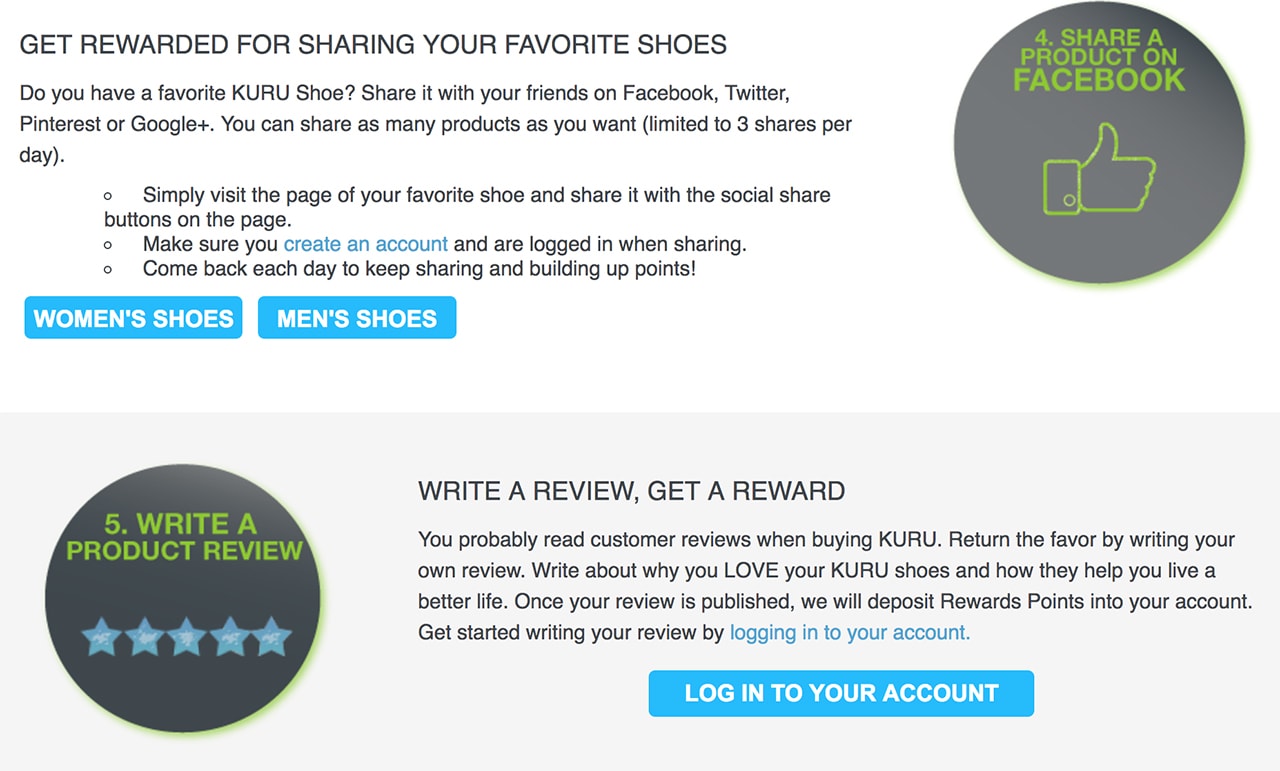
5. Leverage brand advocacy with user generated content
A huge challenge for content marketers and social media marketers is to keep coming up with new and unique content that engages your audience.
The New Yorker faced this challenge as well but also wanted to increase their organic reach. They, therefore, decided to include their reader’s voices on their social channels to solve this.
On example, it regularly regrams followers who use the #newyorkerinthewild a hashtag that highlights the settings in which their followers read the magazine.

On Twitter, they used a hashtag campaign #myTNY to foster discussion about readers and staff writers favorite New Yorker stories
That’s why I like cartoons @ #myTNY ))) pic.twitter.com/wdTno3VsjB
— Andrii Olefirov ?? (@AndriiOlefirov) August 1, 2016
Starbucks regrams its followers and fans who share their passion for Starbucks like the image below

How do you apply this strategy to your business?
Here are a few tips –
- Create a hashtag to identify content that is in line with your campaign and branding objectives
- Encourage rich media informative shares and or reviews
- Encourage your customers and fans to display the product in the best way with photo reviews
- Repost social media shares that include visual media
- Show of use cases of your product for eg: recipes by users
- Organize photo, video, caption or writing contests
6. Add emotion to your message
People often celebrate just about every event in their lives. From birth to death an emotional connection is made with a card at the very least. Businesses, however, seem to overlook opportunities for an emotional connection often.
However, research indicates that customers with an emotional connection are loyal.
Michelin tires, for example, understand that a mundane purchase like tires takes on new significance when you consider what you carry in your car. So they produced this ad and used the tagline – Because so much is riding on your tires.
How can you create an emotional connection?
- Consider the emotion that you would like to evoke with your message – Freedom, security, pleasure, status, health, etc.
- Use words or sentences that tend to bring up such emotions like the ones below:
- Freedom – travel, wealth, career, health
- Status – exclusivity, achievement
- Health – be active, participate
- Safety – protect your loved ones
- Use images that evoke such emotions like Prudential Insurance do their website

- Tailor your message to the audience. For example during the school holidays Australia Zoo came up with a program that fit with its educational and awareness values but aimed at parents who need to keep their kids busy.
These school holidays become a Zoo Keeper For A Day to learn about some awesome wildlife! Book here: https://t.co/DZQE3FORlU ? pic.twitter.com/3BTsUbdF0F
— Australia Zoo (@AustraliaZoo) December 9, 2016
7. Become a storyteller
Research shows that when stories are told the audience engages with the content.
Google don’t really need to market yet they find ways to share their story through the lives of people. This video is a great example of just that.
With over 13,000,000 views and it works on many levels but most of all because it tells a compelling story.
Land Rover isn’t really a brand that is known for sexy marketing but they took to storytelling on social media. They produced an interactive, story detailing a road trip around Britain through video, images, text and other media.
It works well for Land Rover whose brand identity is about adventure. The story evokes emotions of excitement and fear which help market the brand well.
How do you apply this big brand strategy to your business?
- Feature your unique value proposition as Blendtec do with their videos
- Build an online platform like charity: water that allows people to create fundraising campaigns linked to personal events, such as marathons, holidays, or birthdays.
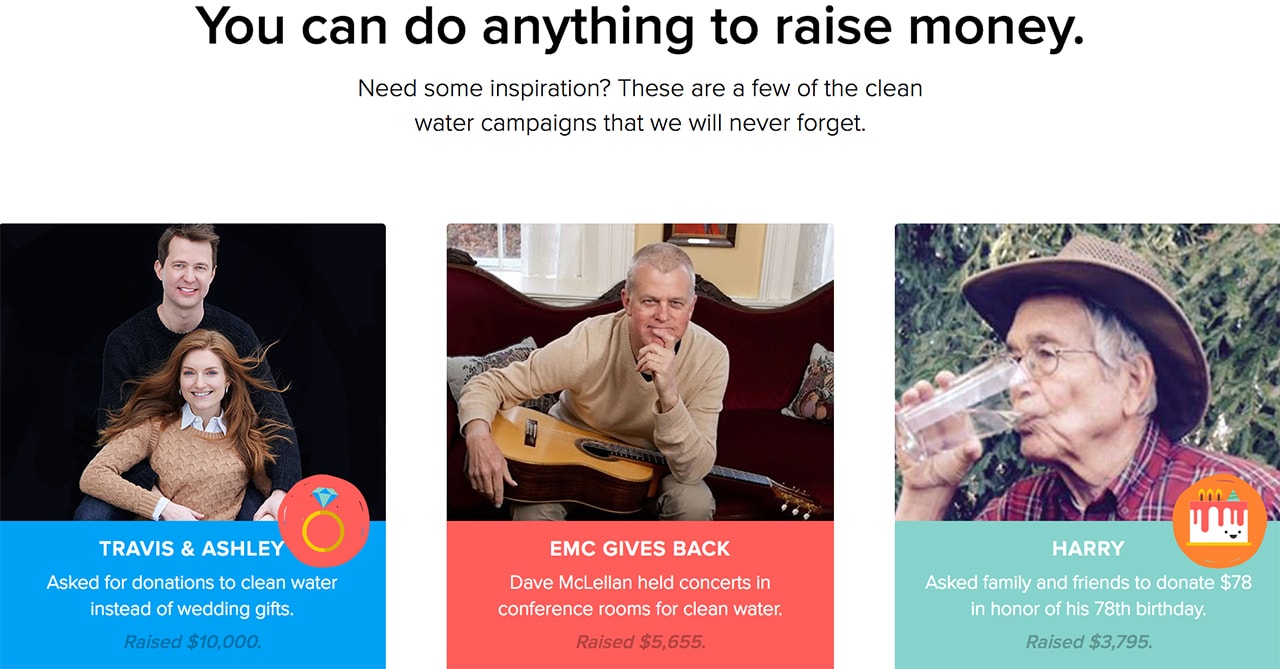
- Align your story with audience values like TOM shoes
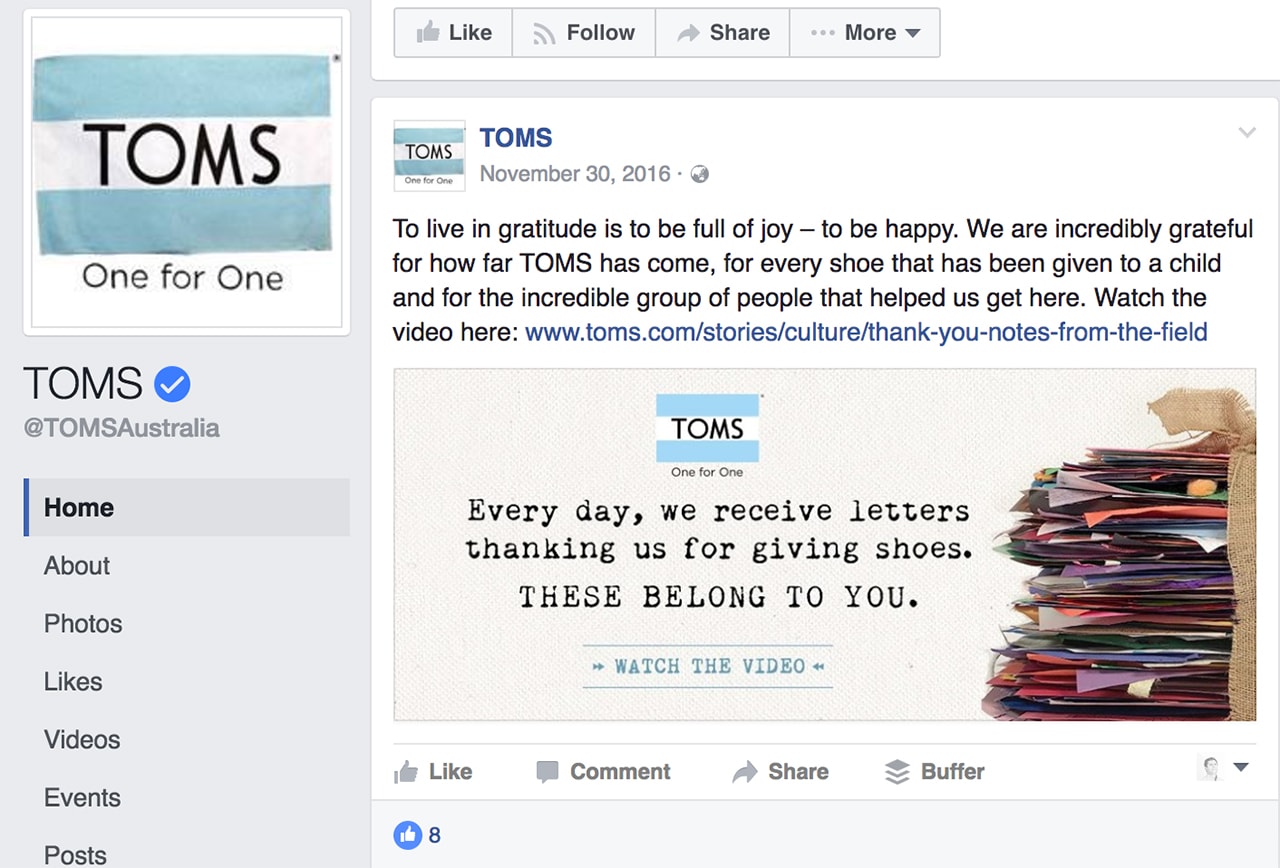
- Tell stories that your audience can become part of like Heinz did in the UK with their Facebook campaign encouraging fans to buy a can of “Get well Soon” soup.
8. Listen actively
Traveling can be hard on anyone and weather, and other unexpected circumstances can make it harder. According to Laurie Meacham the company’s Manager of Customer Commitment –
We call ourselves a customer service company that happens to fly planes
Being on social media is an extension of that. So, when you tweet Jet Blue, you get a response within 10 minutes if possible.
Laurie in an interview explained that moving customer service to Twitter was a natural move. The team, however, doesn’t respond to every single tweet that comes in. Instead, they prioritize tweet responses based on the value they can contribute.
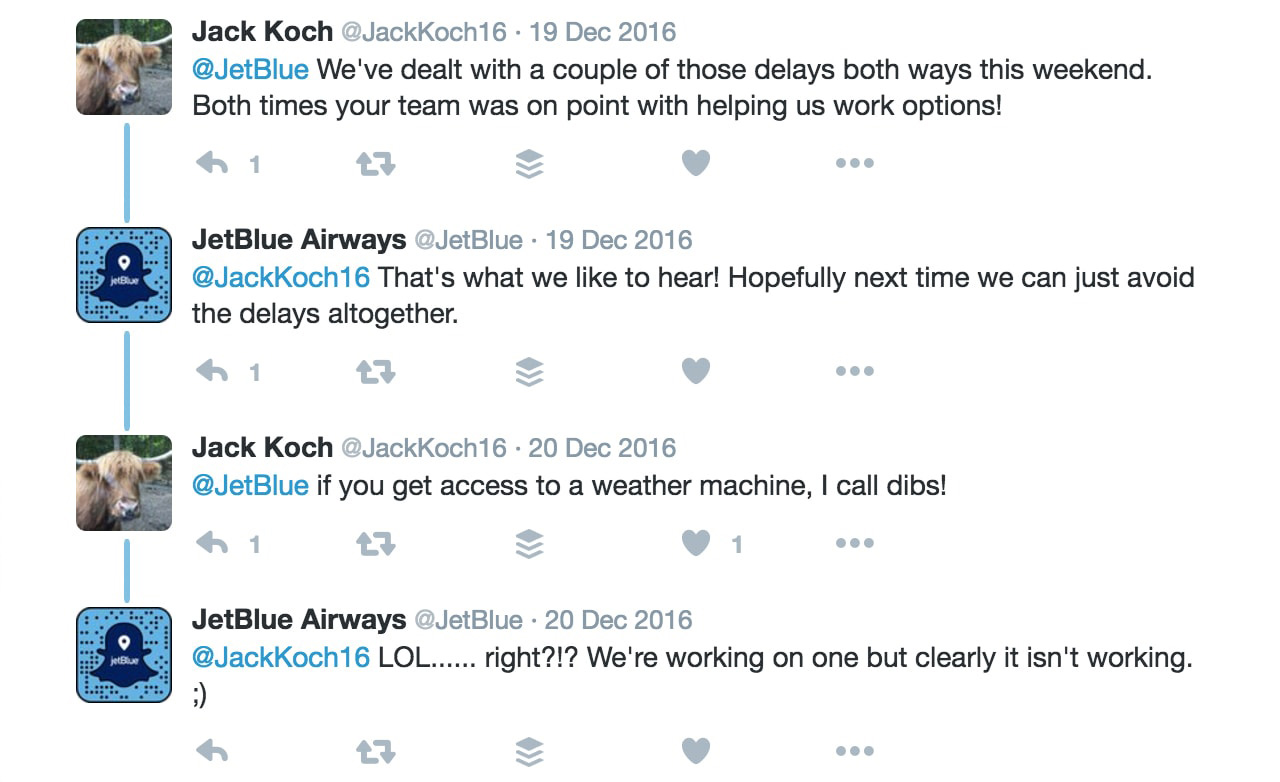
In other words, they don’t measure response rate but rather create an environment to allow employees to engage smartly and have organic conversations that connect with customers and add value.
Win the Airport Games this holiday season! #LetsPlayAirport #HolidayTravel pic.twitter.com/IOz9qmUahi
— JetBlue Airways (@JetBlue) December 21, 2016
How do you apply this strategy to your business?
While you may not have the resources or staff that Jet Blue has, you can incorporate active listening to your strategy as well.
- Use a tool like Tweetdeck, HootSuite or Mention to track what people are saying about your brand and to whom.
- If anything requires your attention like a question or a negative experience you can answer them or, try to address the issue.
- Be open to customer feedback and ideas like Starbucks does on Twitter.
9. Use influencers
According to Neilsen, 77% of people are more likely to buy a product that’s recommended by someone they trust. Starbucks had a goal of increased Frappuccino sales. So, they asked influencers to recommend the brand on their behalf to activate both new and existing fans.
The summer of 2015 campaign encouraged people to spread the word about celebrating summer by grabbing a Frappucino to #MakeSomeFun

How do you apply this strategy to your business?
- Define your social media influencers based on relevance, reach, and resonance
- Identify social media influencers with tools like Klout or Buzzsumo
- Engage with these social media influencers via their content and conversations on social media
- Keep track of these influencers and maintain relationships with them with the help of your CRM tools or via Twitter lists
10. Cross promote
What better way is there to gain more exposure to your content than to cross promote. It doesn’t require extra investment, and you gain a credible introduction to a new engaged audience than you would with traditional social media promotion.
One of the more well-known examples of this was between Google’s Android and KitKat that reached millions of people. KitKat for the campaign produced 50 million KitKat bars with Androids branding. They also offered consumers a chance to win a Nexus Tablet or Google Play gift cards. Google, on the other hand, provided exposure to KitKat by naming one of their releases KitKat.
How do you apply this strategy to your business?
- Select a partner or partners. You could reach out to influencers, local businesses, non-profit organizations or businesses outside your industry or niche. For example, Allegro Apartments wanted to boost attendance at its grand opening party however its desired audience did read the paper. So, they challenged local bartenders to create a signature cocktail. The public voted on their favorite recipes on the Allegro website and RSVP for the grand opening. For social media, the company got local influences to personalize the messages and make it an approachable building. The result – 129 out of 297 properties (43%) were leased within a few weeks.
- Integrate email with social media to maintain relationships and customer retention. For example, MailChimp has a tab on its Facebook page that encourages people to sign up for its MonkeyWrench newsletter.

- Consider co-producing newsletters. For example, a hotel and a car rental company could co-produce a newsletter on tourist activities and major events in the area.
- Cross promote your brands on social media. For example, Best Buy supports St. Jude Children’s Research Hospital in the raising of funds to fight cancer every Thanksgiving and they share this on their respective Twitter accounts.
Each holiday season we partner with @StJude for #ThanksandGiving. Their fight against cancer hits home for Best Buy: https://t.co/qghalybuk4
— Best Buy News (@BBYNews) December 23, 2016
- Co-sponsor a cause. Co-sponsoring a cause provides exposure to each other’s audiences and is likely to attract more contacts than if you were to do it alone. For example, a school that receives support from local businesses could feature them in their weekly newsletter which gets read by parents and others in the community. Co-sponsoring a local team, for example, can provide exposure via their uniforms during games. It also brands you as a business that cares for your community.
- Consider sponsoring a meetup, event or conference. For example, a local web design company could consider being a sponsor of a WordCamp conference or WordPress meetup as people who attend could be potential clients or partners.
- Structure lead generation with specials. The owners of Tony Sacco’s Coal Oven Pizza approached the owner of JEM Jewellers a nearby business for a joint promotion campaign. Why? Because their desired audience was the same.
- Customers who bought a pizza could draw from a jar containing one diamond and 200 cubic zirconias. Once a stone was selected the customers were sent to JEM Jewelers to get it appraised where they were also eligible for a 10% discount on in-store purchases.
The results:
- The pizza store wins repeat business from those wanting to win the diamond as well as new customers.
- The jewelry store won 4 custom designs and several other sales.
- The diamond winner also started referring others to both businesses.
11. Use video
It is not surprising that video is a popular medium. Consider this:
- 59% of executives want to watch a video rather than read text
- 64% of users are more likely to buy after watching a video.
Coca-Cola launched a campaign to combat prejudice based on appearance through a video. The company invited a group of different people to a Ramadan Iftar. The Iftar, which is the breaking of the fast was conducted in the dark. The participants could converse with each other in the dark. Watch the video below to see what happens when the lights come on.
How do you apply this strategy to your business?
Making a video to share on social media channels including YouTube is something that any business can do even without the budget and resources of a company like Coca-Cola.
You could use a smartphone to make a video that informs and or adds value to your customers and prospects. The following videos are just two examples of what can be done very simply and with a bit of creativity.
For instance, this video highlights the Power of words.
With over 100 million views on Facebook and Twitter the video titled “This Unicorn changed the way I poop” made Squatty Potty a success by boosting sales by over 600%.
Over to you
No matter what approach you take, it is important to encourage your customers to share their experiences with your brand. It not only helps build your community but also builds brand exposure and awareness.



